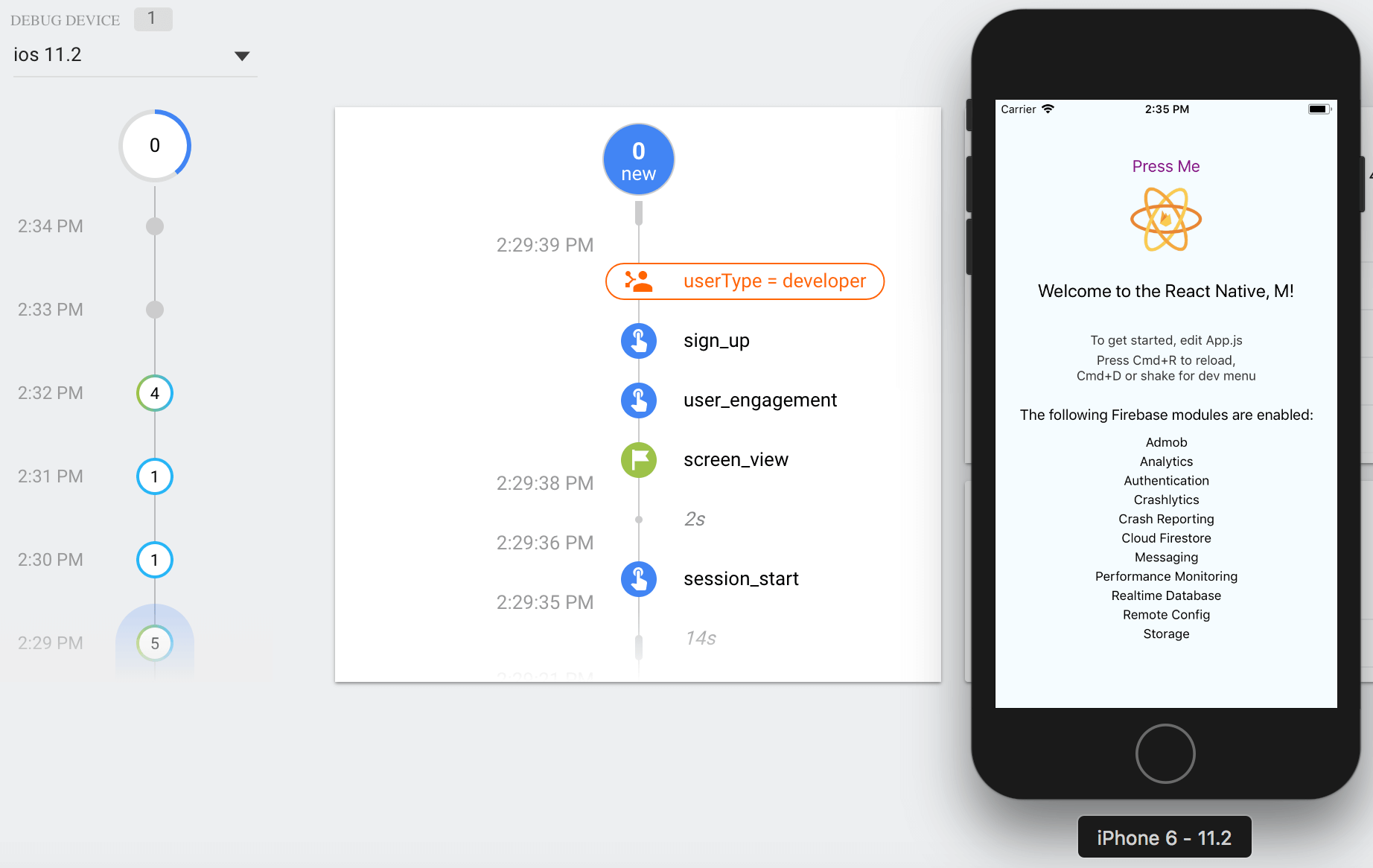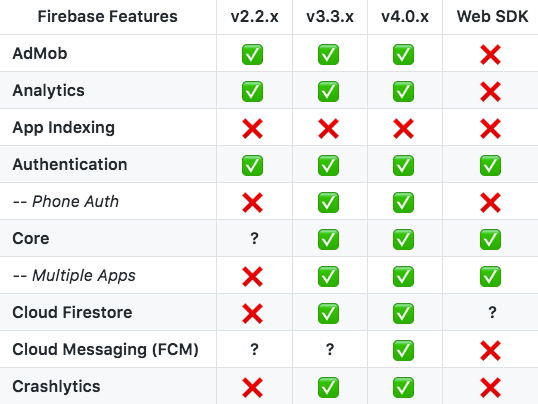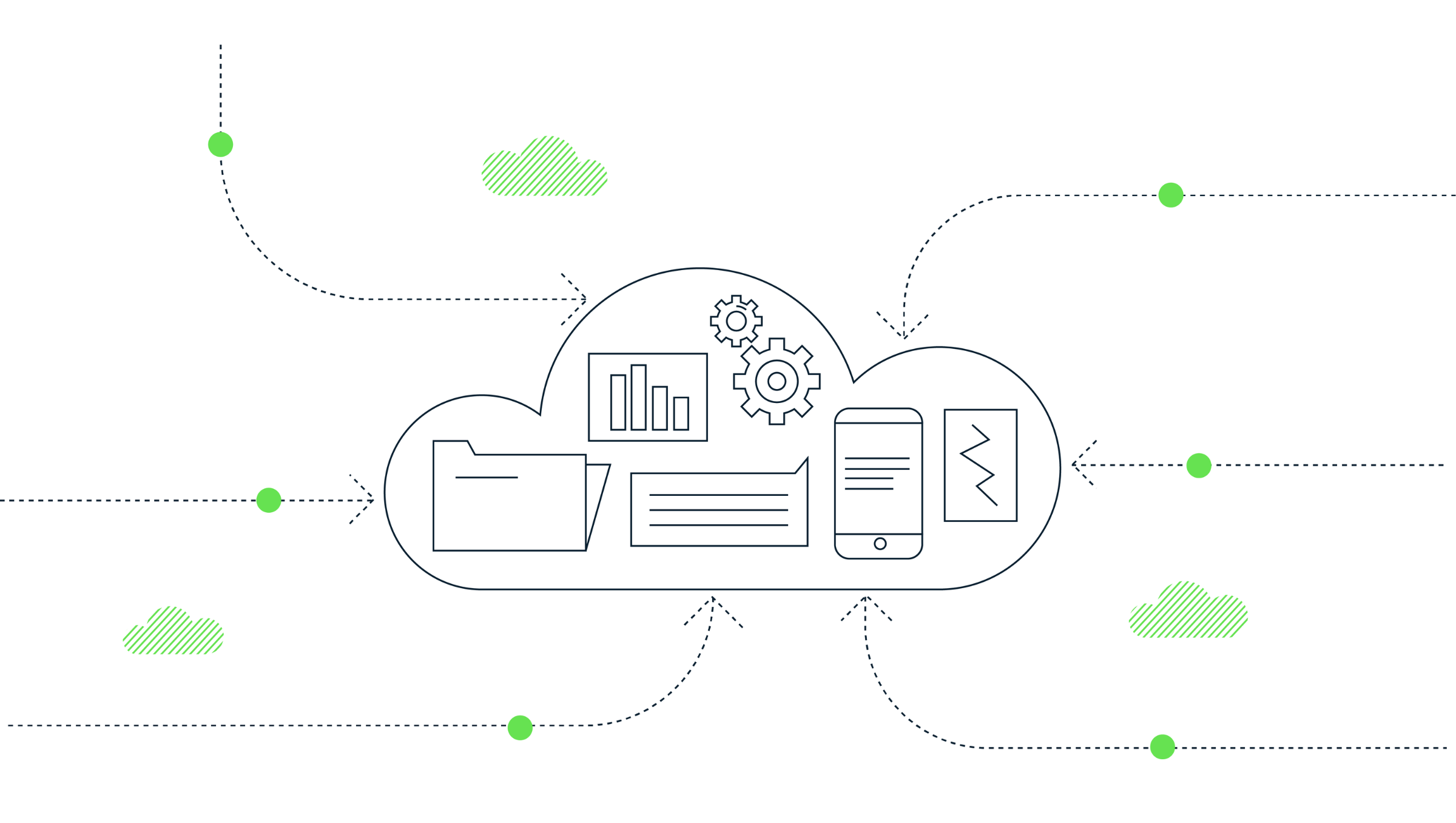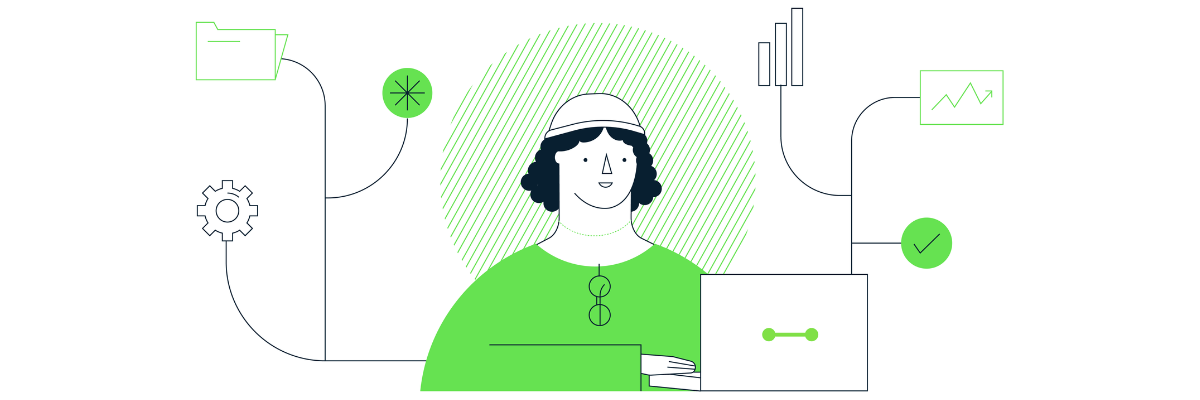Adding Firebase Analytics to your React Native app

This article describes how to integrate Google Analytics for Firebase (formerly Firebase Analytics) to a React Native app. In order to do this, you need to use a JavaScript bridge called RNFirebase.
This is lightweight layer sitting on top of native Firebase libraries for both iOS and Android which mirrors the Firebase Web SDK as closely as possible.
Even though the Firebase Web SDK library will work with React Native, it is mainly built for the web and some features are not available. You can find more details on the documentation page, but in summary, RNFirebase offers a faster performance over the web SDK and allows to hook into device SDKs which is not possible with the web SDK.
Here’s a screenshot of some of the features that are available in RNFirebase in comparison to the Firebase Web SDK:

In order to add Firebase to your React Native app, you need to create a Firebase project and then follow the steps for both Android and iOS. Once you have Firebase added to your app, you can start adding custom tracking. The below code examples have been added to the app.js file in my React Native project folder.
1) Setting the current screen name
setCurrentScreen(name)
Sets the current screen name, which specifies the current visual context in your app. This helps identify the areas in your app where users spend their time and how they interact with your app.
Example: firebase.analytics().setCurrentScreen(‘home’);
2) Setting User Properties
setUserProperty(name, value)
Analytics automatically logs some user properties; you don’t need to add any code to enable these. If your app needs to collect additional data, you can set up to 25 different Analytics User Properties in your app. You can analyze behaviors of various user segments by applying these properties as filters to your reports.
Example: firebase.analytics().setUserProperty(‘userType’, ‘developer’);
Note: This feature must be used in accordance with Google’s Privacy Policy.
3) Logging an Event
logEvent(name, params)
Logs an app event. If your app needs to collect additional data, you can log up to 500 different Analytics Event types in your app. Be aware of automatically collected events.
Example: firebase.analytics().logEvent(“buttonPressed”);

Debugging Firebase Analytics
The events recorded are not automatically sent to Firebase. Instead they are cached and periodically sent to the servers. You can however enable debug mode in Firebase for both Android and iOS.
For Android devices you have to run the following command:
adb shell setprop debug.firebase.analytics.app <package_name>
For iOS you have to pass the following argument in Xcode:
-FIRDebugEnabled
After this step, you should be able to see events in the Firebase console under DebugView. At this point you should have default Firebase tracking implemented and also some custom events being logged to your Firebase project.

Subscribe to our newsletter:
Further reading

How to extract GA4’s event sequencing in BigQuery using the new batch fields

What is offline event data import in GA4?
